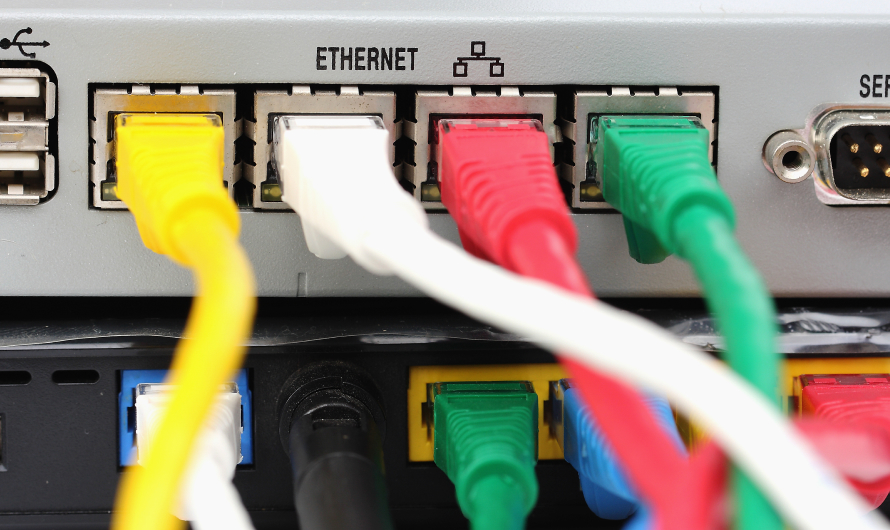Modems, routers, and switches are the three most commonly used pieces of equipment in our offices, homes and elsewhere. You can see them everywhere. Right from the data centre hosting Google to the internet connection in your house. Despite its omnipresence, many people are oblivious to the uses of each device. Sometimes, people are unaware of the differences between wifi and router.
Buy Airtel Wi-Fi with exciting benefits!
In this article, we will aim to clarify what each piece does, and how they complete your broadband connection. You will also learn how are they different from one another in detail:
What is a modem?
It is a device that bypasses the telephone system and connects directly to a wireless network. It can directly access the internet connectivity offered by a provider.
Wireless modems can be pre-built into smartphones, mobile phones, and Personal Data Assistants (PDAs). In addition to this, companies might distribute in the form of USBs, serial, or wireless firewall modems.
Other types of wireless modems range from the size of a cable modem to the size of a credit card or smaller.
What is a wifi router?
It is a device that acts as the ‘traffic director’ of a network. It takes information provided by the wireless modem and routes it to a device attached to the modem.
The router then creates Network Address Translated (NAT) internal private Internet Protocol (IP) address to the connected devices so that they can be accessed. Home routers include built-in switches in order to provide the ability for multiple devices to be connected to the same network.
Business or enterprise routers, on the other hand, may not include this functionality as they require a standalone and separate switch.
What is a switch in networking?
To best understand what a switch is, let’s consider a power strip. It is a piece of equipment with multiple outlets for devices to plug into, in order to use electricity. A switch is very similar, except in this case, instead of providing power, it offers outlets for a network.
It is a device that connects multiple devices on the same network. Unlike a router that is capable of creating and routing between TCP/IP networks, a switch is designed to facilitate communications for devices on the same network.
It uses the MAC address to send information where it needs to go. Thus, it reduces the amount of data on the network, thereby, increasing the overall performance of the connected devices while improving security.
Now that you know the meaning of a modem, router, and switch, let’s proceed further to understand the differences and similarities between these three products.
Modem vs Router vs Switch, Similarities and Differences:
Since they are standard components in Ethernet networks, a switch, router, and modem bear many similarities. However, there are also some key characteristics that set them apart. So, let us begin by first understanding the similarities between them:
What are the similarities?
- All the three devices are small plastic or metal-box shaped electronic gadgets
- Switches, routers, and modems let computers connect to them for the purpose of enabling communication between them through Internet Protocol (IP)
- They have certain physical ports on the front or back, which provide the connection points for computers, a connection for electric power, and LED lights to display the working status
After understanding the similarities between the three devices, let’s move ahead to find out what are the differences that set them apart from each other below:
What is the difference between a switch, wifi router, and modem?
-
Modem vs switch difference
Modems and switches share the least common ground of the three pieces of networking equipment. Rarely do these devices connect to each other or communicate directly. In most cases, they usually have a router in between them.
When you integrate a router and modem into one device, the switches connect directly to it. Despite this, the traffic first goes through the router before being sent to the internal modem.
Traffic from the switch will only go to the modem when it comes out of your network. Although modems and switches are common network devices, they are much less intertwined than a modem and router.
-
Modem vs router difference
A router is specifically used to join networks together. When used at home, the router connects the internal local network to your ISP’s network. And then, it is connected to the modem (provided by the ISP) on one end and a switch on the other end (local network). The internet port on the router connects to the modem and the rest of the ports are for switches.
A modem, on the other hand, has a coaxial port for the cable connection from your ISP and a single port to link the internet port on your router. It is used to connect your ISP using a phone line (for DSL), cable connection, or fiber. Thus, all these together make your wifi connection a reality.
To sum up, a wifi modem, switch, and router may have certain similarities. However, it is their differences that set them apart from each other. Thus, it is important to identify what makes them different from one another before purchasing them. No you won’t have difficulty in finding the difference between modem vs router.


 Get App
Get App  Airtel Store
Airtel Store  Login
Login 


